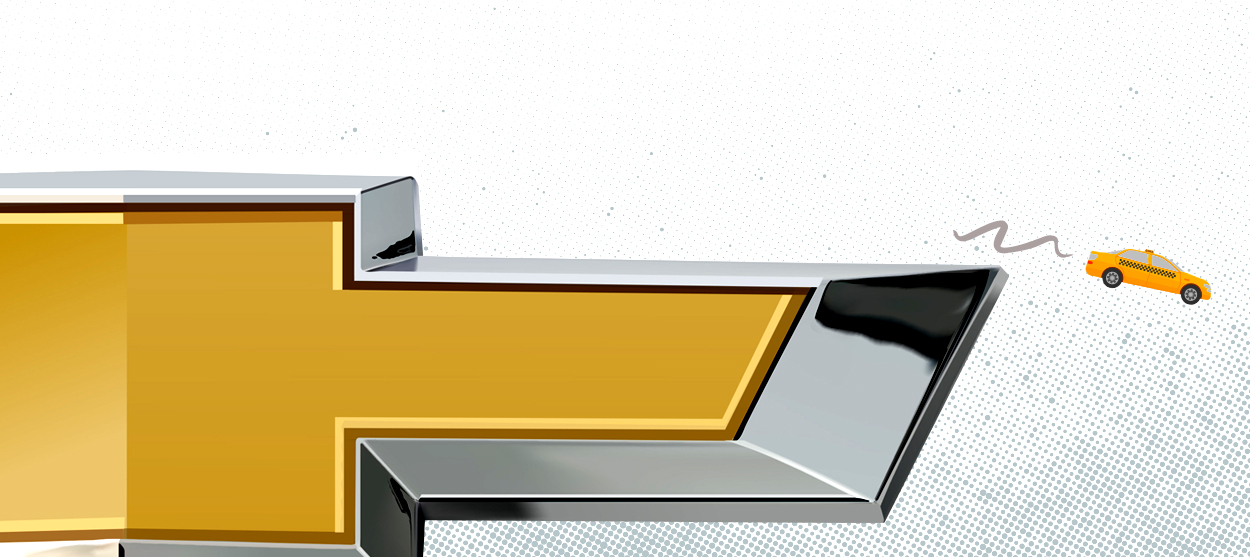What if the car of the future isn't a car at all?
The many problems with GM's Cruise autonomous vehicle announcement


The future of the car is the car. Or, it's a better car. No, wait, it's a car that isn't really a car.
Sorry, if I sound confused, that's because I am. This week, Cruise, the autonomous driving startup acquired by General Motors, announced its Origin, a self-driving vehicle that purports to be what comes next after the car. The Origin looks a bit like a large metal box on wheels. It lacks pedals, a steering wheel, a trunk, or even an engine, and has doors that slide open to reveal an interior with two facing bench seats. It is intended to act as a shuttle service that drives itself. Call the Origin with an app, get to where you're going, and never own a car again. That's the idea, anyway.
But the Origin is symptom of a larger problem in how we think about the future of transportation. At best, self-driving technology is not ready. At worst, it is the wrong solution for changing how people get around.
The Week
Escape your echo chamber. Get the facts behind the news, plus analysis from multiple perspectives.

Sign up for The Week's Free Newsletters
From our morning news briefing to a weekly Good News Newsletter, get the best of The Week delivered directly to your inbox.
From our morning news briefing to a weekly Good News Newsletter, get the best of The Week delivered directly to your inbox.
That is not to say there aren't things to like about the Origin, or Cruise. For one, the company resists referring to it as a car. That's a start at least: it suggests that the company isn't merely aiming to modestly evolve the car as we know it. It instead hopes to create something entirely new.
And in that sense, the Origin shows some promise. For one, it is not made to be sold to consumers. It is, rather, designed from the ground up to be part of a so-called "ride-sharing" service. By making the car modular and upgradeable — that is, making the drivetrain, sensors, and computing replaceable — Cruise believes it can bring down the exorbitant unit costs of self-driving cars, which can be upwards of $300,000 per vehicle. That kind of economic sustainability is conspicuously missing from its competitors' talking points, which famously lose billions of dollars.
But Cruise and other self-driving companies that trumpet themselves as the future of how we get to point A to point B face some serious problems, some technical, some more philosophical.
Firstly, autonomous driving doesn't actually seem to be ready for the reality of messy, complicated streets that are teeming with humans. Most experts now agree that full self-driving tech is far from ready — and in fact, may never be ready. That is a stark contrast from the claims from some companies that insist it's already here. Yes it's true, the company Waymo has put autonomous vehicles with no safety driver into service. But its pilot project is taking place in a suburb of Phoenix, Arizona, an almost ideal test location, with wide streets, low traffic, and minimal pedestrian or cyclist presence.
A free daily email with the biggest news stories of the day – and the best features from TheWeek.com
Further, self-driving cars face another problem of their own making: Their various sensors and safety technology is actually making human-driven cars a safer than their autonomous brethren. As just one example, automatic emergency braking has already reduced rear-end collisions by 50 percent, and the National Transportation Safety Board believes this figure will eventually rise to 80 percent. It seems that predictive or avoidant technology, combined with the knowledge of a human driver, is a better solution to the problem of collisions and injury than cars that just drive themselves.
Perhaps the broader technical issue is that cars are only one part of the shift to autonomous vehicles. This shift actually requires systemic solutions — that is, sensors and markers built into the road system, dedicated loading zones, lanes and sections of highways dedicated to self-driving cars, just to name a few. For self-driving to truly work, we also need an interlinked network that includes cars and roads, not just cars themselves.
Those are all technical issues — problems of implementation or efficacy. Perhaps the actual problem with self-driving tech is that it simply can't be the primary focus for the future of transportation in cities.
Look at the interior of the Origin. Despite being the supposed future of the car, it is still a two- or three-ton vehicle that houses, at max, four or five people. You might share a ride with some fellow Origin riders, but it is vastly less efficient than a bus or a tram or a train. Similarly, the plans for a ride-hailing app and service seem less appealing when you consider companies like Uber and Lyft themselves admit they actually make traffic worse. If the aim is to revolutionize transport, a tiny number of people in a vehicle that still takes up significant room on the road doesn't exactly feel like the future.
Put more plainly, Cruise's plans are indicative of the problem with self-driving startups: They assume that smarter cars are the solution to our transportation problems, when in fact, a vastly more promising solution comes in the form of fewer cars, more public transit, and more walkable, accessible cities. Yes, cars will still be an important part of the transportation network, especially for the elderly or those with mobility issues. But as it stands, Cruise's vision of the future is a replica of past mistakes.
Want more essential commentary and analysis like this delivered straight to your inbox? Sign up for The Week's "Today's best articles" newsletter here.
Navneet Alang is a technology and culture writer based out of Toronto. His work has appeared in The Atlantic, New Republic, Globe and Mail, and Hazlitt.
-
 How climate change is affecting Christmas traditions
How climate change is affecting Christmas traditionsThe Explainer There may be a slim chance of future white Christmases
-
 The MAGA civil war takes center stage at the Turning Point USA conference
The MAGA civil war takes center stage at the Turning Point USA conferenceIN THE SPOTLIGHT ‘Americafest 2025′ was a who’s who of right-wing heavyweights eager to settle scores and lay claim to the future of MAGA
-
 The 8 best drama movies of 2025
The 8 best drama movies of 2025the week recommends Nuclear war, dictatorship and the summer of 2020 highlight the most important and memorable films of 2025
-
 Are zoos ethical?
Are zoos ethical?The Explainer Examining the pros and cons of supporting these controversial institutions
-
 Will COVID-19 wind up saving lives?
Will COVID-19 wind up saving lives?The Explainer By spurring vaccine development, the pandemic is one crisis that hasn’t gone to waste
-
 Coronavirus vaccine guide: Everything you need to know so far
Coronavirus vaccine guide: Everything you need to know so farThe Explainer Effectiveness, doses, variants, and methods — explained
-
 The climate refugees are here. They're Americans.
The climate refugees are here. They're Americans.The Explainer Wildfires are forcing people from their homes in droves. Where will they go now?
-
 Coronavirus' looming psychological crisis
Coronavirus' looming psychological crisisThe Explainer On the coming epidemic of despair
-
 The growing crisis in cosmology
The growing crisis in cosmologyThe Explainer Unexplained discrepancies are appearing in measurements of how rapidly the universe is expanding
-
 The threat of killer asteroids
The threat of killer asteroidsThe Explainer Everything you need to know about asteroids hitting Earth and wiping out humanity
-
 The scientific reason why everyone in the galaxy is obsessed with Baby Yoda
The scientific reason why everyone in the galaxy is obsessed with Baby YodaThe Explainer Even the Mandalorian can't resist the evolutionary power of cuteness
